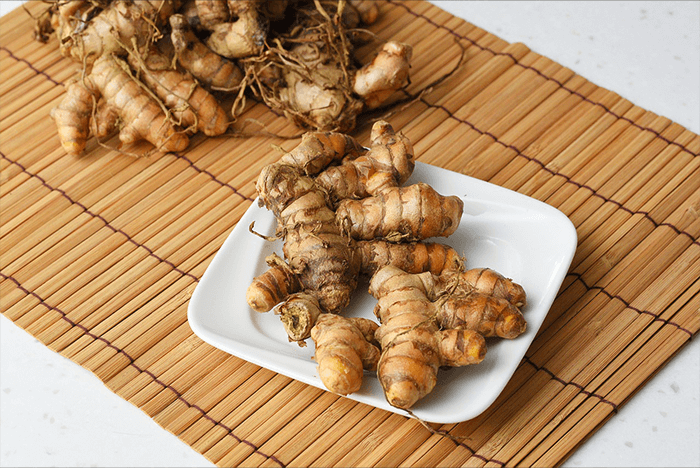Description
Ginger (Zingiber officinale) is a flowering plant whose rhizome, commonly known as ginger root, is widely used as a spice and for its medicinal properties. Originating in Southeast Asia, ginger has been cultivated for thousands of years and is now grown in tropical and subtropical regions around the world. The plant belongs to the family Zingiberaceae, which also includes turmeric, cardamom, and galangal.
Common Features
- Rhizome: The most notable part of the ginger plant is its rhizome, which is the underground stem used for culinary and medicinal purposes. The rhizome is thick, knobby, and aromatic, with a spicy, pungent flavor. It can be yellow, white, or red in color depending on the variety.
- Leaves: Ginger plants have long, narrow leaves that are bright green and arranged alternately along the stem. The leaves are lanceolate (lance-shaped) and can grow up to 20 cm long.
- Flowers: The flowers of the ginger plant are small, yellow-green, and grow in dense, cone-shaped spikes. They often have purple edges and are less commonly seen because the plant is usually harvested before flowering.
- Height: Ginger plants typically reach a height of 1 to 1.5 meters.
Role in the Ecosystem
Ginger plays several roles in its ecosystem:
- Soil Health: Ginger cultivation can contribute to soil health, especially when used in crop rotation. Its dense root system helps prevent soil erosion.
- Pollinator Support: Although ginger flowers are not the primary reason for growing the plant, they can attract pollinators such as bees and butterflies when they do bloom.
- Cultural Biodiversity: Ginger is an essential part of traditional medicine systems in many cultures, contributing to the preservation of biodiversity in medicinal plants.
Importance
Ginger is highly valued for its extensive range of uses:
- Culinary Uses: Ginger is a staple in many cuisines around the world. It is used fresh, dried, powdered, or as an oil or juice. Common in Asian dishes, ginger is also used in baking (like gingerbread), beverages (like ginger tea and ginger ale), and various savory and sweet recipes.
- Medicinal Uses: Ginger has a long history of use in traditional medicine for treating digestive issues, nausea, colds, and inflammation. Modern studies suggest that ginger may help reduce muscle pain, lower blood sugar, and combat nausea, especially in pregnant women.
- Economic Importance: Ginger is an important cash crop in many countries, including India, China, and Jamaica. Its global trade is significant, making it a valuable agricultural product.
Interesting Facts
- Ancient Remedy: Ginger has been used in traditional Chinese and Ayurvedic medicine for over 2,000 years to treat a variety of ailments, including arthritis, colds, and digestive issues.
- Global Spice: Ginger is one of the most widely used spices in the world, with a history that spans multiple continents and centuries. It was highly prized in ancient Rome and medieval Europe.
- Scientific Name: The scientific name Zingiber officinale is derived from the Sanskrit word “srngaveram,” which refers to the shape of the ginger root resembling a deer’s antlers.
Sources:
The information provided was compiled from a variety of reputable sources, including:
- National Center for Biotechnology Information (NCBI)
- United States Department of Agriculture (USDA)
- Research articles from the Journal of Agricultural and Food Chemistry



